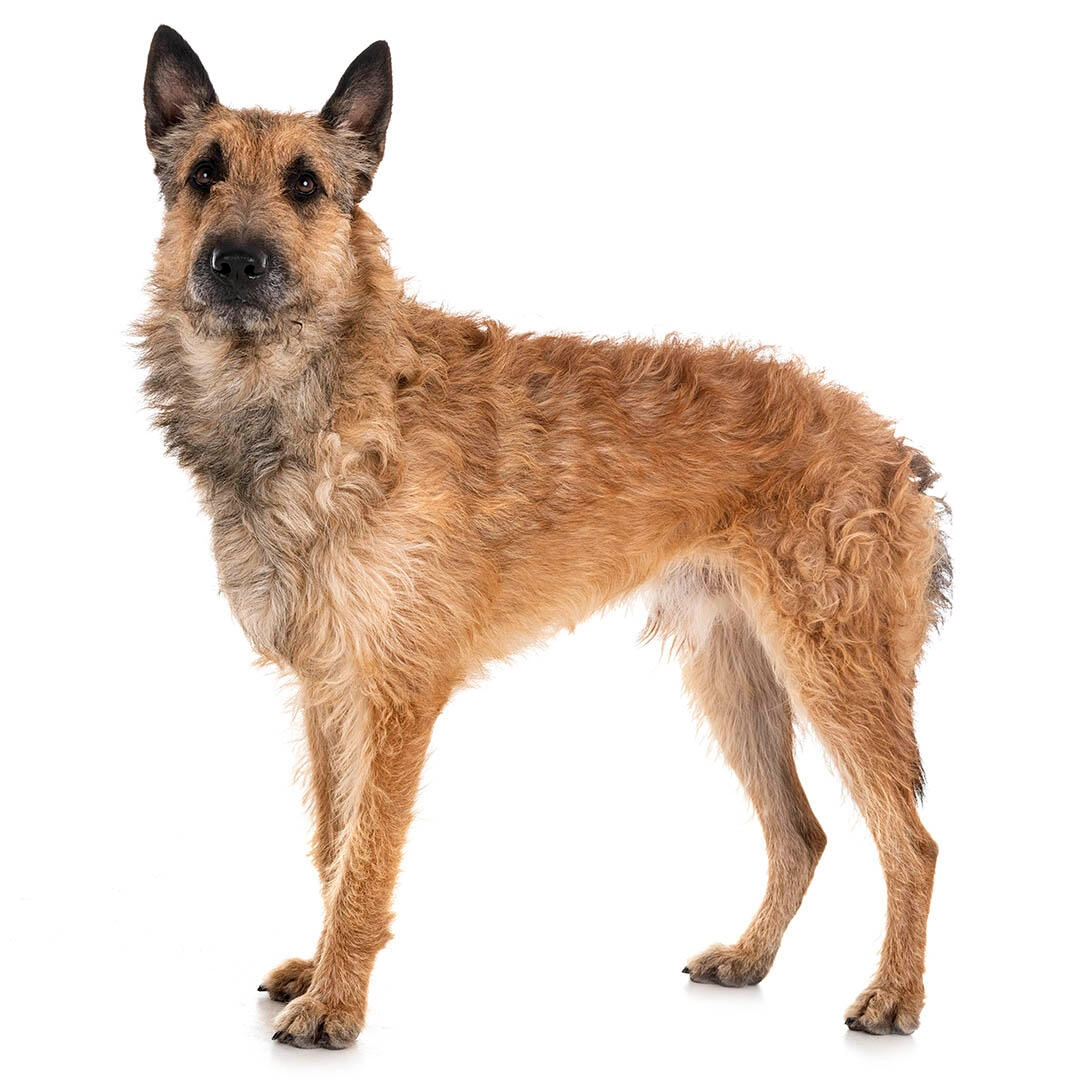
The Laekenois dog breed is a medium-sized/large, rough-haired dog that appears square in outline. The weatherproof coat comes in reddish with black shading mainly on the muzzle and tail. Adult dogs should measure between 61-66cm and females between 56-61cm. They weigh between 27.5-28.5kg.
The need-to-know
- Dog suitable for experienced owners
- Extra training required
- Enjoys vigorous walks
- Enjoys walking more than two hours a day
- Large dog
- Some drool
- Requires grooming every other day
- Non hypoallergenic breed
- Chatty and vocal dog
- Guard dog. Barks and alerts
- May require training to live with other pets
- May require training to live with kids
Personality

As a pet, he is a devoted companion; he does not like to be separated from his family, preferring to join in with all activities. Affectionate with his loved ones, he is naturally protective of his home and family – an instinct that appears naturally and does not need to be encouraged. Early socialisation is vital with all dogs with guarding tendencies, including the Laekenois dog, especially as he can be quarrelsome with other dogs if lacking positive, early experiences.
History and Origins

The Belgian Shepherd Dog comes in four varieties: the Laekenois, Tervueren, Groenendael and Malinois, named after the areas in Belgium from which they came. The Laekenois dog is the rarest of the four varieties. They were originally used for herding and to guard the linen fields where valuable cloths were laid in the sun and rain. As their coats were harsh and wiry, they were ideal for outdoor work in all weathers. Today the Belgian army and the police use them.
Nutrition and Feeding

Large breed dogs, as well as having large appetites, benefit from a different balance of nutrients including minerals and vitamins compared to smaller-breed dogs.
Exercise

The Laekenois dog needs two hours-plus of daily exercise and mental stimulation. Highly trainable, he can excel at agility, obedience and other canine sports. They are very active dogs and should not be considered as pets if they are to be left alone all day.
Other Information

Health and common issues
As with many breeds, all varieties of the Belgian can suffer from hereditary eye disorders, and hip dysplasia (a condition that can lead to mobility problems). Eye testing and hip scoring of dogs prior to breeding is therefore important.
Best family dog breeds
While many dogs are traditionally thought of as being good with children , all dogs and children need to be taught to get on with and respect each other, and be safe together. Even so, dogs and young children should never be left alone together and adults should supervise all interactions between them.